There’s a cliff that runs from downtown Omaha to Florence, At the bottom of that cliff was a lot of water, originally from the Missouri River and later, swampy areas fed by springs and runoff from the neighborhoods above. In order to get to East Omaha, those wet areas needed crossed, and Omaha did that a few times. This is a history of one of those crossings called the Locust Street Viaduct.
The Need for a Viaduct
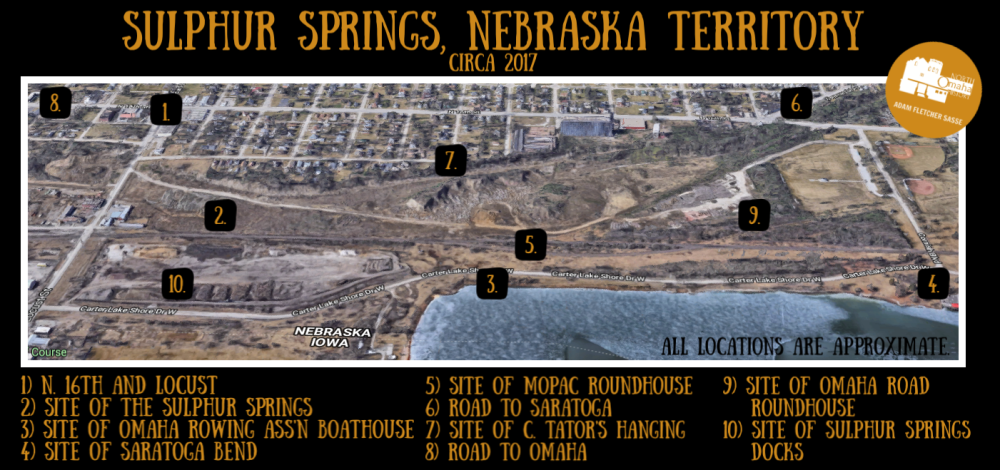
When Cutoff Lake was formed in 1877, the area of North Omaha around North 16th and Locust Streets, the old buildings at Sulphur Springs, and the town of East Omaha were isolated from each other. There were people living, recreating and working on both sides of the lake, so in the early 1880s a bridge was built on Locust Street to cross the lake.

Starting in 1892, the East Omaha Factory District was built up near the Missouri River in a town called East Omaha. Over the next 30 years, that town grew to 2,500 people. In the same decade, the little village of Carter Lake along Locust Street was legally cutoff from Nebraska. All of those people needed a way to get from the growing intersection of North 16th and Locust Streets to their homes, the amusement parks and resorts, and the jobs they worked. The Locust Street causeway made of dirt and rock was constructed at the south end of the lake in 1892.

In 1900, the City of Omaha parks board leader, Edward J. Cornish, started promoting the idea of a viaduct to carry Locust Street over the railroad tracks as part of a Lakeshore Drive that would extend through a new park surrounding the lake. While his plan was only halfway executed, it did result in the viaduct getting built. The City of Omaha went on a rip to get the railroad companies to build the infrastructure required to support their success. The local government wanted two massive elevated roadways built over the train tracks that crossed just east of N. 16th Street, including one at Nicholas Street and one at Locust Street.
By the time the City was itching for this construction, there were two bridges across Carter Lake and two roundhouses just north of Locust Street, as well as the bustling village of Carter Lake with its resort cabins, amusement parks and race track nearby. A lot of traffic was in and around Locust Street.
Along with the streetcar company which ran a line along Locust Street from North 16th, there were pedestrians, horses, carriages and newfangled bicycles had a hard time with the busy train schedule.

In the 1909 mayoral campaign, the viaduct was an issue for candidates, particularly with the recent donation by Levi Carter of parklands at the east end of where the viaduct would be.

In 1913, the City Council allocated $100,000 for the 26′ wide roadway. Within a year, they were in the Nebraska State Supreme Court with the Missouri Pacific Railroad, the Union Pacific Railroad, and they won a trial that the railroads said they never needed. The City and the railroads started replacing the causeway in 1913 and kept going for three years after. In 1916, the Chicago, St. Paul, Minneapolis and Omaha Railroad paid another $25,000 into the construction of the viaduct, and it was finished that year.
The viaduct was 40′ above the railroad, and was more than two blocks long, extending from about 14th Street almost all the way to Carter Lake Drive.
In June 1916, a fire started from a train going underneath nearly obliterated the entire viaduct. The Missouri Pacific picked up the bill from their engine’s mistake and rebuilt the entire structure within a month.

With a team of horses and its wagon coming up the Locust Street viaduct from Carter Lake, one day in 1920 a City of Omaha dogcatcher truck came flying around the corner from N. 16th. Not seeing the wagon, the dogcatcher truck hit the wagon and horses. Albert Jackson, the dogcatcher, jumped out and started yelling at the old man who was driving the wagon. Getting mad, he pulled out his gun and soon hit the wagon driver over the head with it. Across the street, Roy Teeter saw what happened and rushed over to intervene. He was a young guy, and when Jackson started yelling at the old man again, Teeter punched him to the ground in defense of the old man. When Jackson was able to get up again, he pointed his weapon at Teeter and shot him dead. Jackson was found guilty of murder in the first degree, and was sent to the Nebraska State Penitentiary for life.
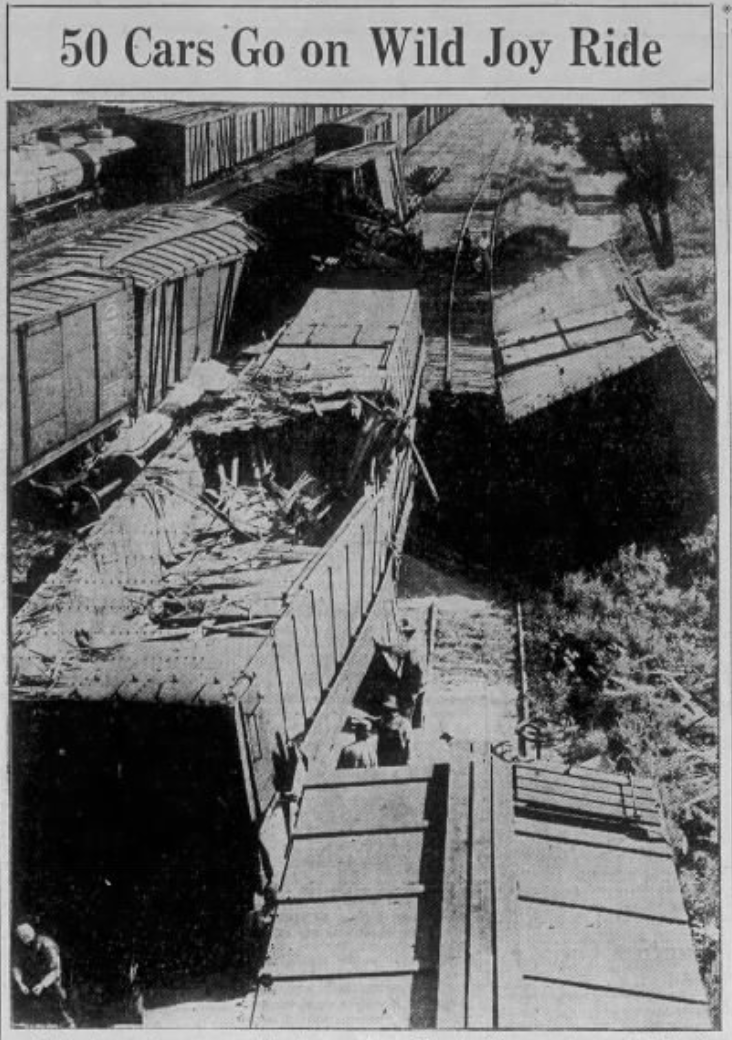
In August 1930, the Omaha Bee-News told the story of some runaway train cars that crashed near the Locust Street Viaduct, causing extensive damage. 50 Missouri Pacific freight cars were mysteriously decoupled from their train. Packed with wheat with some empty cars, the “terrific impact [was] heard within a radius of a mile.” According to MoPac officials, “The two foremost cars on the careening train were sheared completely in two in the collision and 15 others were badly damaged.” Nobody was injured, and I haven’t found anything about the investigation, including what the cause of the crash was.
Fast-forward 40+ years, and in 1974 the bridge was cited for structural deficiencies. In 1977, it was closed for three months for repairs.
The End of the Viaduct
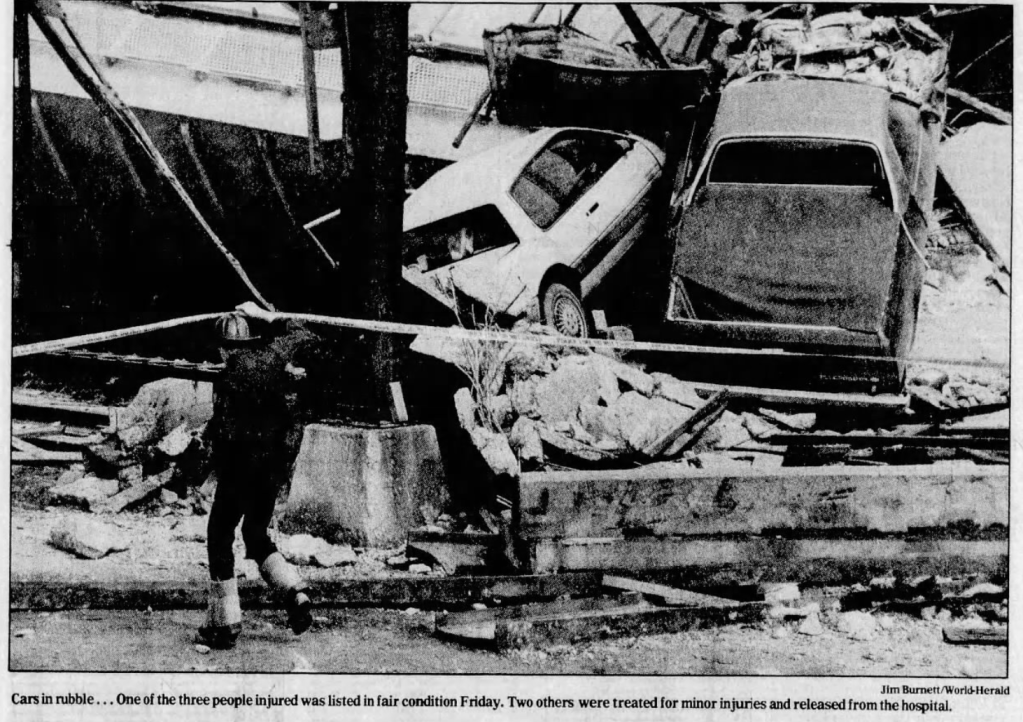
In March 1990, three cars were sent off the viaduct when a Union Pacific train derailed and struck a support for the structure, pulling away part of the it. 150 feet of the structure was visually damaged, and parts of the roadway fell onto the train cars below. People in the cars were hurt, but nobody died.
By September 1990, there were plans to remove the entire viaduct, replacing it with a street-level crossing. All signs of the Locust Street Viaduct were gone shortly after that work was finished.
In 2015, the City of Omaha withdrew a bid to develop an industrial park on the site of the original Sulphur Springs landing on the Missouri River, claiming toxins from the roundhouse and other railroad-related activities have poisoned the land beyond its affordability. As of January 2024, that land continues to be mostly unoccupied by anything useful.
Despite its historic legacy and enduring story, there are no historical markers, tours or other recognitions of the Locust Street Viaduct anywhere in Omaha today. Maybe that will change in the future. In the meantime, the next time you drive west on Locust Street from North 16th, remember that once there were wagons and bicycles, streetcars and then a lot of trucks and cars that crossed over railroad tracks there on a massive viaduct.
And now its all gone, forever.
You Might Like…
- A History of the Nicholas Streetcar Barn in North Omaha
- A History of 16th and Locust Historic District in North Omaha
- A History of the Town of East Omaha
- A History of Carter Lake
MY ARTICLES ABOUT THE HISTORY OF STREETS IN NORTH OMAHA
STREETS: 16th Street | 24th Street | Cuming Street | Military Avenue | Saddle Creek Road | Florence Main Street
BOULEVARDS: Florence Boulevard | Fontenelle Boulevard
INTERSECTIONS: 42nd and Redman | 40th and Ames | 40th and Hamilton | 30th and Ames | 24th and Fort | 30th and Fort | 24th and Ames | 24th and Lake | 16th and Locust | 20th and Lake | 45th and Military | 24th and Pratt
STREETCARS: Streetcars | Streetcars in Benson | 26th and Lake Streetcar Barn | 19th and Nicholas Streetcar Barn | Omaha Horse Railway
BRIDGES: Locust Street Viaduct | Nicholas Street Viaduct | Mormon Bridge | Ames Avenue Bridge | Miller Park Bridges
OTHER: North Freeway | Sorenson Parkway | J.J. Pershing Drive | River Drive
BONUS

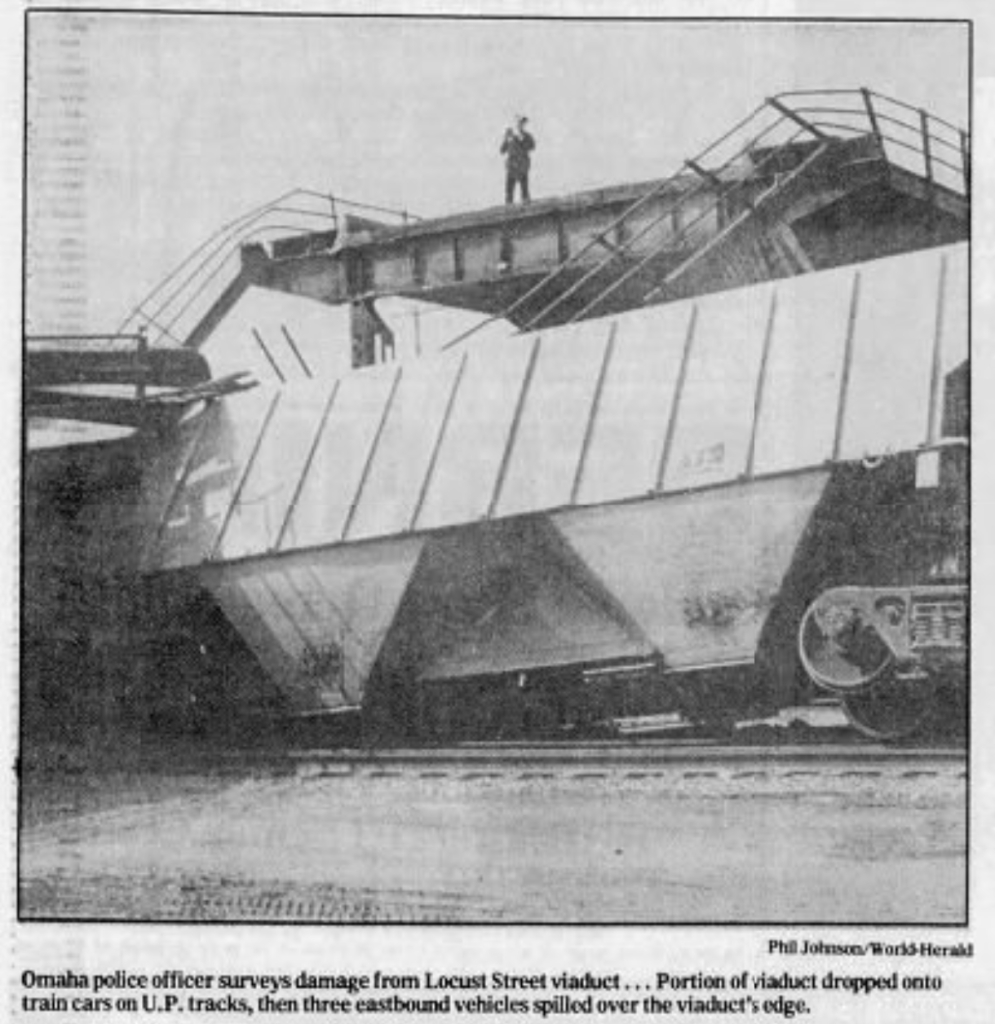


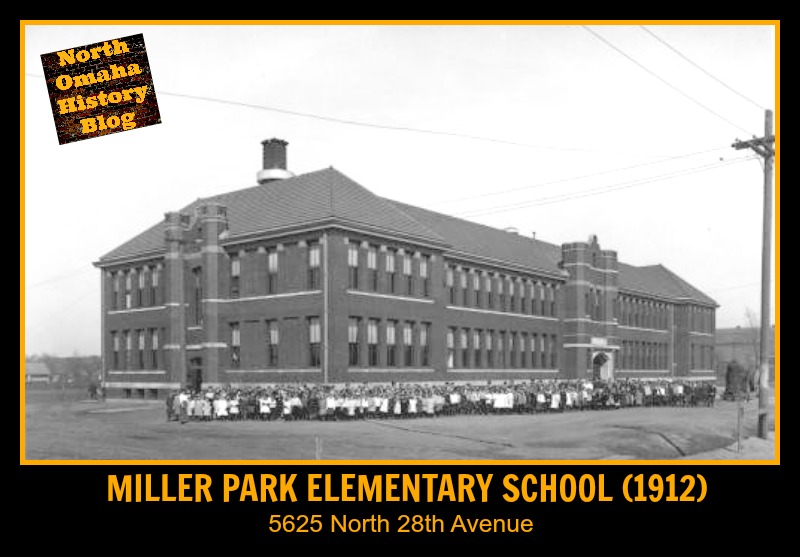



Leave a comment